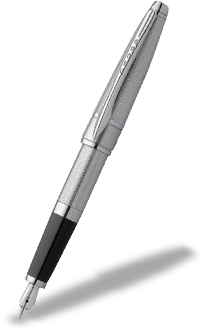CREATING AN OASIS IN A CONGESTED CITY
This article was written and published in September, 2021, under the title “D’Urban Park,” urging its creation as a ‘recreational space,’ one of the objectives of the President’s Plan to rescue Georgetown. Now is therefore an opportune time to revive consideration of the future of D’Urban Park.
The continuation of what appears to be its utilization for the construction of government buildings will further scar the city and deprive Georgetown of a piece of rapidly dwindling real estate that can be used to expand its green and recreational spaces. If the President’s Plan is to succeed in restoring Georgetown to its glory days as a “garden city,” His Excellency will not allow more of D’Urban Park to fall victim to the Government’s appetite for space. I publish below an amended version of my 2021 article.
D’Urban Park and D’Urban Backlands are named after Sir Benjamin D’Urban, appointed Governor of Demerara-Essequibo in 1824. He became, with the addition of Berbice in 1831, Governor of British Guiana from 1831 to 1833. D’Urban Park was home to Guyana’s most famous horse racing track. I remember when, still a child, I was taken there to horse racing by an uncle, a lifelong horseracing enthusiast. I distinctly recall the crowd and the noise, over which the resonantly distinctive voice of the announcer, the late Lloyd Luckhoo, expertly modulated and paced to evoke tension and excitement as the race came to a climactic end.
Driving to work on Homestretch Avenue (so named because that northern side of D’Urban Park was the “homestretch” of the horse racing track) several times a week over the past several decades, I felt for D’Urban Park, maybe because of that fleeting childhood memory of its glory days, as it became overrun with haphazardly growing weeds, bushes and wild trees. I have often wondered why it could not be developed as a real park for the citizens of and visitors to Georgetown. It is large enough to accommodate trees and flower patches, a walkway for joggers around all or part of the perimeter, football, cricket, lawn tennis, hockey and basketball fields, safe play areas for children, gardens and benches for relaxation, restricted areas for sale of snacks, a car park and other amenities. With its large open space, it can still become an oasis in an increasingly congested city, which is gradually being overrun by square, concrete structures of no aesthetic value, wild driving, double parking, careless pedestrians, uncouth road users, infestation by mini-buses, blaring horns and rubbish-strewn, pot-holed, streets.
The Government changed in 2015 and the new dispensation immediately manifested its philistine character by the hurried and controversial construction at D’Urban Park of an ugly set of wooden structures, purporting to be stands for seating invitees to listen to politicians celebrating Guyana’s 50th Independence Anniversary in 2016. Two areas were already in existence that could have accommodated such events – the National Park refurbished for the purpose or the Providence Stadium. As time passed, it was realized that the structures at D’Urban Park reflected the low standards that the decades of poor management and distressed condition of the city engendered in the political hierarchy. It precluded the imagination from rising above the pedestrian. After the US Embassy in the 1970s, nothing of unique quality was constructed in the city. Even now, square boxes called hotels and office buildings that are rapidly claiming the skyline. The stands at D’Urban Park are rotting in full view of the President’s office.
With the decline of Georgetown as the ‘garden city,’ and with it the disappearance of its shaded, tree-lined avenues, darkly glittering waterways, pebbled streets and colonial-style houses, governmental authorities seemed also to have lost any interest in restoring it, even partially. The state of City Hall which has existed for at least fifteen years tells this sad story. Thankfully its restoration and the President’s plans to rescue Georgetown hint at a welcome change in approach. Continuous construction of Government buildings threaten to rob D’Urban Park of its open space but much of it still exists, and it is available to create a place of beauty and recreation – the President’s goals. South Georgetown will benefit enormously from the beautification of that area.
A space in Georgetown that can be similarly developed as a green haven for residents and visitors to the city is the vast real estate abutting Seawall Road. Unless the Government has set it aside for hotels and other monstrosities to create a skyline for Georgetown and feed the oil industry, which would be deeply regrettable, this area can also be developed for relaxation purposes before vendors take up permanent residence and cannot be removed, as at the airport. It has always been so used by Georgetown residents for vastly more than fifty years.
For those of us who live and work in the city, it will become ‘old’ Georgetown. As a few rare voices seek to make it more habitable, ‘new’ Georgetown will be taking shape at the periphery of the ‘old,’ which will awe and overwhelm with its mansions and high-rise office buildings. We need to raise our voices now for ‘old’ Georgetown to make living in it a pleasurable experience, as ‘new’ Georgetown takes shape, in a petroleum-fueled frenzy.





